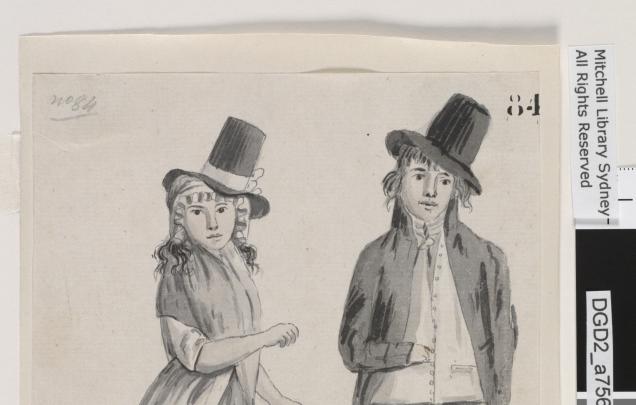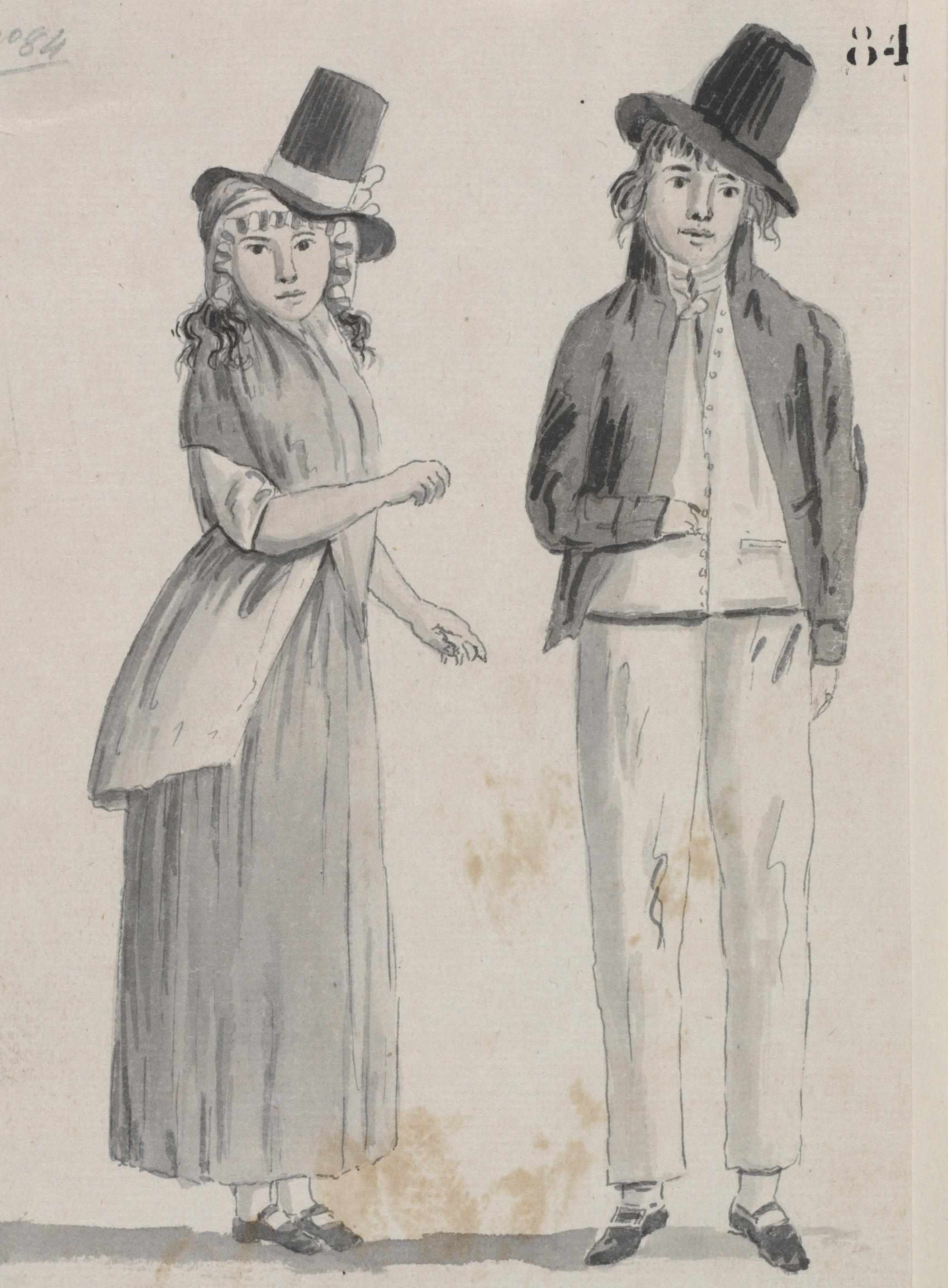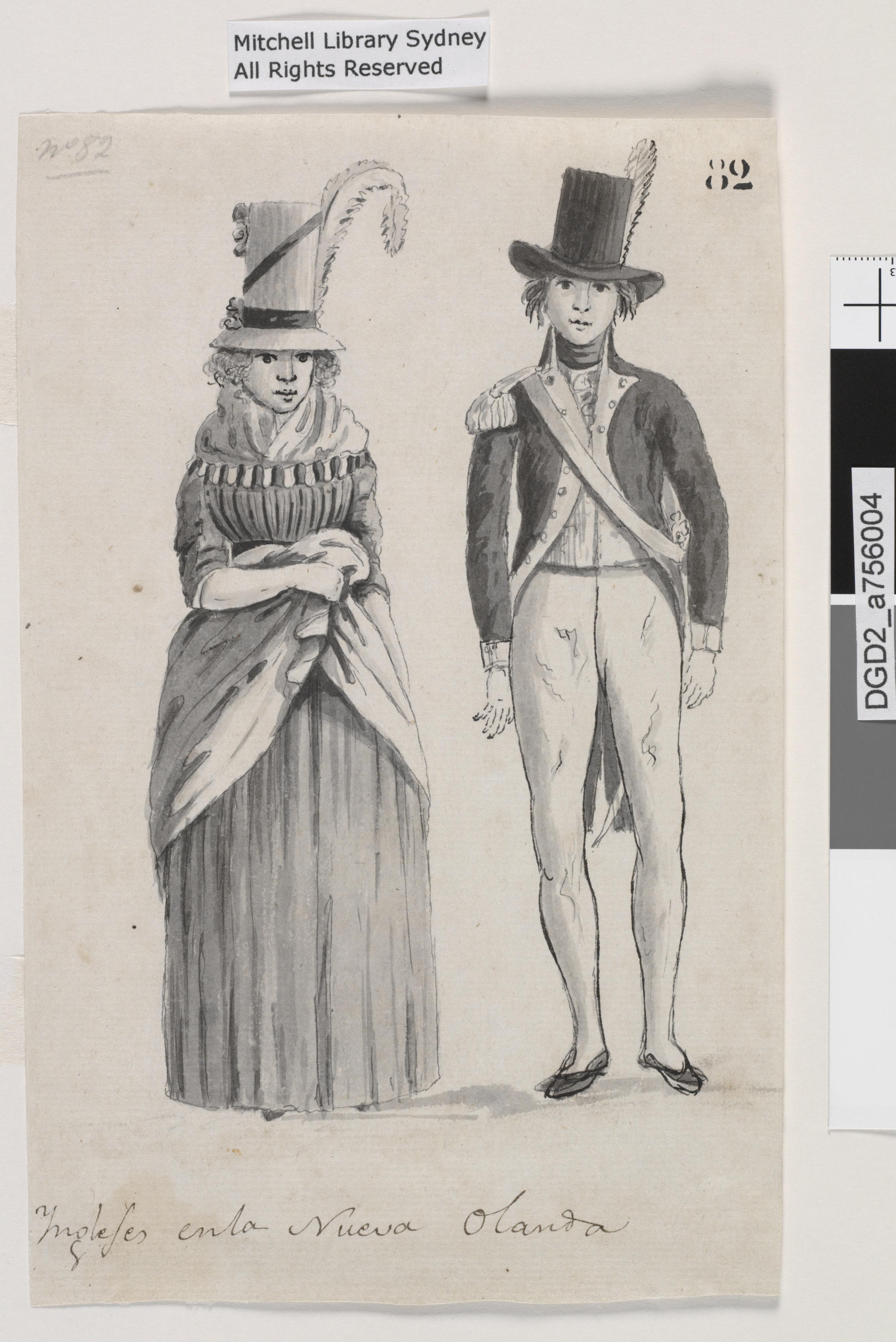Clothing vs Fashion
Students compare the clothing of convicts and soldiers and their wives.
This is the student activity 1 of 7 of the Convict clothing learning activity.

Clothing vs Fashion
Studying the crimes committed in England by the First Fleet convicts (both men and women) reveals many related to clothing – stealing lace, fabric, gloves, hats, waistcoats, gown, handkerchiefs, stockings, boots, piece of dimity (light cotton fabric) or ‘wearing apparel’. There was value in these stolen items when sold and having a knowledge of what was fashionable was necessary. We can guess that many of these convicts had a knowledge of fashion.
Answer this question:
- What is the difference between clothing and fashion?
These First Fleet convict women were not wearing the latest fashion in England although we can guess they may have been desiring it. The concept of fashion for the working classes in England had only really started a decade or so before. Prior to this, English clothing was highly regulated by sumptuary laws to keep the rich people looking rich and the poor people looking poor!
Look at the images, below, from 1793 that depict convict clothing in the first image and a Marines officer and his wife in the second image. They are primary sources. Remember that these painting were created five years after the First Fleet arrived when more supplies had been brought by ship to the colony, free settlers had arrived and shops and businesses had begun.
Compare the two images.
Answer these questions:
- What are the similarities and differences between the two?
- What materials would have been used to make the clothing?
- What accessories and embellishments can you identify on the Marine officer and his wife’s clothing?
- Do you think the convicts desired those things?
In time, convicts worked toward making a life for themselves in the new colony. When they became ex-convicts, one way they could move far away from the convict background was through clothing. What you wore had power and was a form of silent communication.
Over time convict clothing became more varied and but it was still dependent on supplies coming by ship. As the years went on clothing was turning into fashion!
Read Judge David Collins description of the range of clothing now available from 1794-5.
nankeen waistcoat [and] a very fashionable rose-coloured petticoat… accompanied with a gypsy bonnet of the same colour.
Define the word nankeen.
Notice the change in description of items. Clothes have coloured (rose – a type of pink) and a hat has been upgraded to a bonnet! A gypsy bonnet!
Once there were more supplies available, convicts and ex-convicts could go shopping or barter. Clothing was a way to change your past as the clothes you wore communicated to other people that you had money and status.
Have a dress-up day. Raid your wardrobe and make your own version of a convict outfit using whatever you already have, such as, scarves, belts, hats etc.

